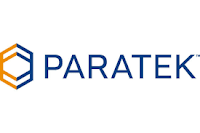BARDA, Paratek and Pull Incentives


In December, BARDA and Paratek announced a large award to Paratek for the development of omadacycline (NUZYRA®) for the prevention of anthrax. The total award is valued at up to $285 million over five years with an option to extend the contract up to 10 years. The grant includes $59 million for the development of NUZYRA for the treatment of pulmonary anthrax and the purchase of an initial 2,500 treatment courses of NUZYRA to add to the current Strategic National Stockpile. The contract provides for additional potential time-based funding including approximately $77 million for existing FDA post-market regulatory commitments that Paratek would have had to fund themselves - scheduled to begin in April 2020. It includes approximately $20 million for manufacturing-related requirements scheduled to begin in June 2020. The remaining staged, milestone-based funding includes the potential for approximately $13 million to support the development of NUZYRA for the prophylaxis of anthrax and a maximum of approximately $115 million to provide for three additional purchases of NUZYRA for the Strategic National Stockpile, each of which will be triggered upon development milestones related to the anthrax treatment development program.
Today I spoke with Evan Loh, the CEO of Paratek. Evan and I worked together briefly when we were both at Wyeth around 2000. Our discussion really centered around my questions as to whether this contract could be a paradigm for a BARDA-driven pull incentive for small pharmaceutical companies like Paratek. Evan’s opinion is clearly a resounding “Yes.”
As of today, Evan notes that around $1.1 billion dollars have been invested in Paratek including both private, public and non-dilutive funding, since its founding in July 1996. One of the largest Paratek “failure” costs in terms of clinical development was the five-year delay they endured because of FDA’s uncertainty around requirements for antibiotic trials between 2006 and 2012. Another cost was Paratek’s recent phase II cUTI and uUTI trials. These trials identified a potentially clinically effective dose however this dose did not demonstrate a comparable level of microbiological efficacy. But at least these results precluded them from proceeding into a much more expensive phase III trial.
Between the provisions of the GAIN Act allowing for extended exclusivity and additional patents, Paratek now has clear exclusivity for omadacycline until at least 2031.
What does the BARDA contract do for Paratek’s bottom line? Before the BARDA contract, Paratek estimated that their runway, based on $220 million in capital, would run until Q1 2021- about one year. After the BARDA contract, their runway is estimated to go through the first half of 2023 – over two years of extension. Paratek’s cash runway prediction depends on operational costs (they project ~$30-35million per quarter). Success for Paratek will still depend on achieving adequate sales. But after BARDA, Paratek believes that there is a path to profitability and sustainability. Evan noted that Emergent Solutions had an order for $500 million for their anthrax vaccine for the SNS. Based on this, he thinks there may be additional upside potential for Paratek’s interaction with BARDA.
Evan believes that this kind of pull incentive, where a still-viable company with a product that fills an important medical need, and where sales will still be required to achieve profitability is an important way forward. I agree with him and have so stated in previous blogs. He also expressed how honored he is that Paratek was chosen for this award and that he thinks that this could be an important model for the future of antibiotics. We all hope that his opinion is shared on Capitol Hill!
To achieve the required sales numbers, Evan believes that DISARM will be an important incentive because it takes the cost of the drug out of the formulary decision for antibiotics designated in the act. I would like to delve into this further in a future blog.
So – what do I think about BARDA as a source for a significant pull incentive? I think that this level of incentive might work for a small, publicly held company like Paratek. It is not possible to underestimate the importance of this action by BARDA to bolster the antibiotic marketplace in a way that also helps to meet our national security needs. But this pull incentive is unlikely to incentivize large pharma or private investors to any great extent. As such, I’m not sure it will end our current cycle of investor exodus from the area and may not provide sufficient confidence in the ability of antibiotic investments to provide a significant return.
Other steps we could take without spending large amounts of money include networking between expert societies. I have written previously about the need for IDSA to step up and revise their clinical guidelines on at least an annual basis. They could, in addition, ally themselves with expert societies representing oncologists, transplant specialists, surgeons and others such that clinical guidelines on antibiotic use are kept current among a broad range of physicians. Having additional lobbying strength from these groups would not hurt our cause either.



